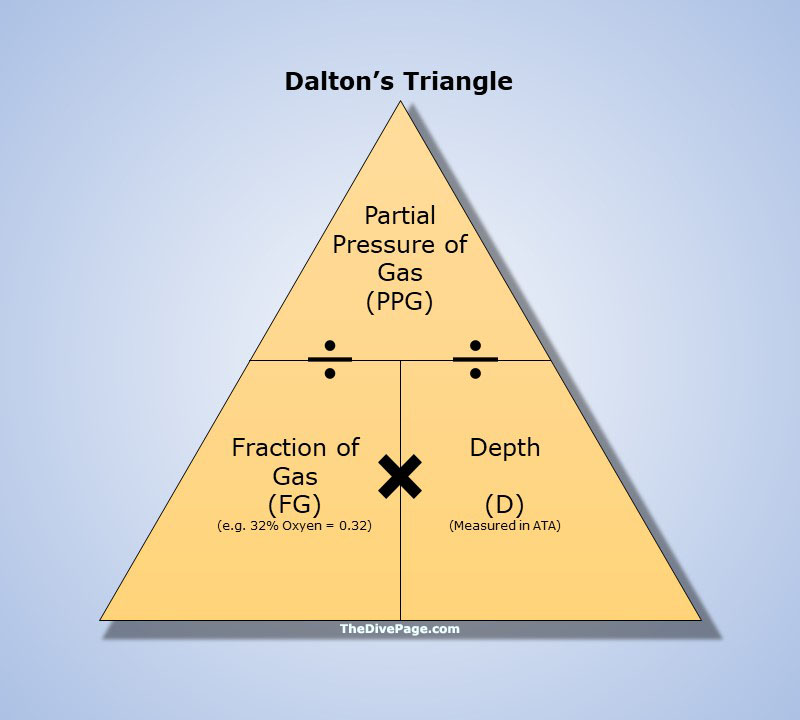
Beginner’s Guide to Nitrox & Dalton’s Triangle
In recreational diving, breathing Nitrox instead of air is a great way to extend your diving No Decompression Limit (NDL). But there are limitations to different oxygen (gas) ratios and how deep you can dive.
With the help of Dalton’s triangle, it’s pretty easy to calculate. Read on to find out how.
Oxygen can be dangerous to humans
Firstly, it’s important to know that whilst oxygen is critical to life, it can become toxic under (partial) pressure; measured as PPO2. On regular air (21% oxygen, 79% hydrogen), toxicity typically starts below around 66m / 220ft. This is when it becomes dangerous to our Central Nervous System (CNS) and the length of exposure really comes into play.
When diving with nitrox, a diver is exposed to a higher gas partial pressure than normal, which needs to be monitored carefully. Generally speaking, recreational divers stick to a maximum PPO2 of 1.4. This number is important to remember, because it guides us in monitoring the limits of a given nitrox blend.
With this in mind, we can easily calculate what combination of Nitrox, Depth and PPO2 is safe to dive with. Dalton’s triangle (created by John Dalton in 1802!) helps us with this.
Putting Dalton’s Triangle into Practice
If you want to dive with Nitrox 32 at 20 meters, you can calculate with Dalton’s Triangle as follows:
- Nitrox 32 = 0.32
- 20 meters = 3 ATA (1 ATA at surface, + 1 for every 10 meters)
- Dalton’s Triangle: 0.32 x 3 = 0.96 PPO2 (below 1.4, so it’s safe to use)
If you want to find the maximum operating depth (MOD) of Nitrox 32:
- Max PPO2 = 1.4
- Nitrox 32 = 0.32
- Dalton’s Triangle: 1.4 / 0.32 = 4.375 ATA
- 4.375 ATA in meters = (4.375-1) * 10 = ~33 meters
- Nitrox 32 should not be used deeper than 33m!
Say you wanted to dive to 35 meters with Nitrox 40,
- Nitrox 40 = 0.40
- 35 meters = 4.5 ATA
- Dalton’s Triangle: 0.4 * 4 = 1.6 PPO2
- This exceeds the 1.4 PPO2 safe limit of recreational diving, so should not be used!
Keeping Dalton’s Triangle in mind will help you quickly and safely work out what Nitrox oxygen level is best for your diving.
Many agencies offer formal nitrox certification. For example: Enriched Air Diver with PADI or Computer Nitrox Diver with SDI.